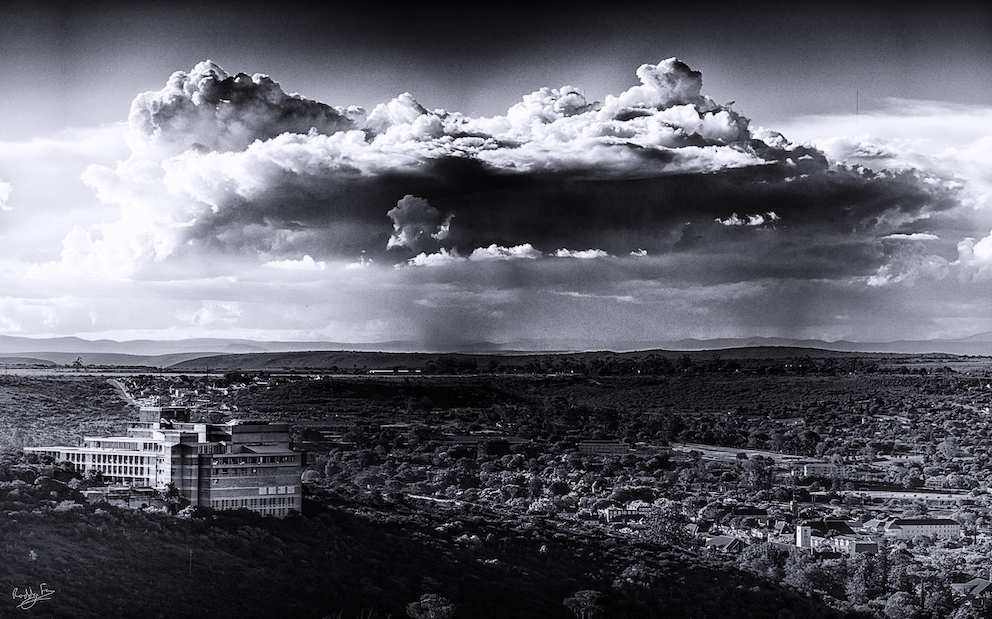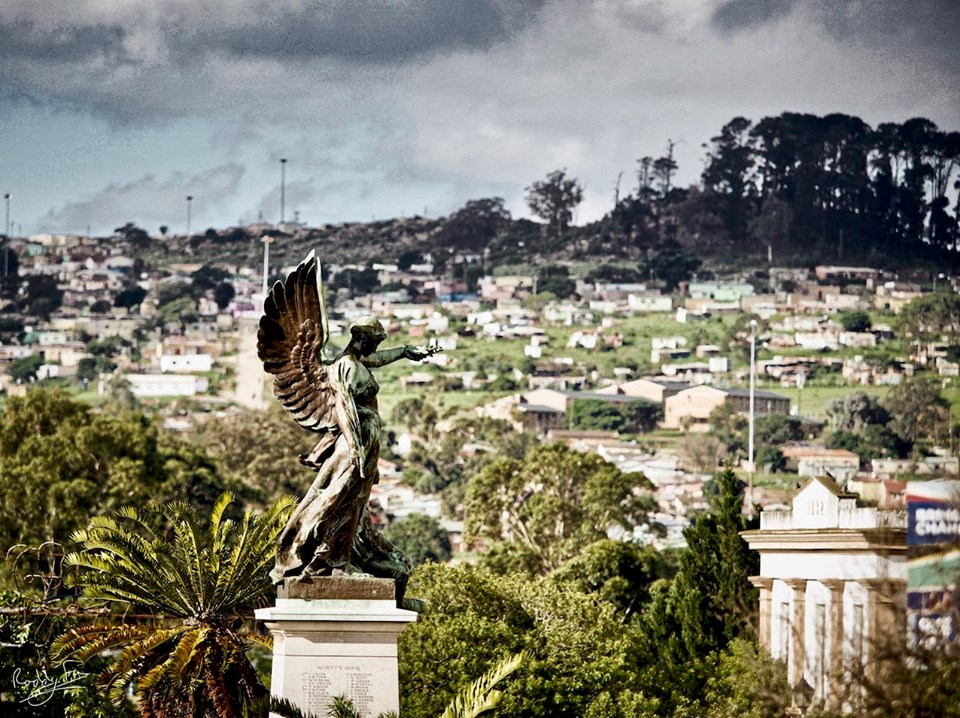Grahamstown or Makhanda?
We’ve had a lot to say about the proposed name change.
Get to Know Grahamstown
A Brief History
The Xhosa chief Ndlambe and 20,000 of his people were expelled from the Zuurveld in 1811 by the British government at the Cape. The British then proceeded with plans for the colonization of the region.
The Commander of the British Force, Colonel John Graham, decided (on the recommendation of Ensign Andries Stockenstrom) to base a garrison town on the farm De Rietfontein. Construction of his headquarters, located on the site of the present Church Square, began in June 1812. Governor Cradock named the town after Colonel Graham.
The AmaXhosa people made repeated efforts to return to their ancestral lands. Led by Chief Makhanda, 10,000 warriors attacked Grahamstown on 22 April 1819. The attack was repelled by Colonel Wilshire, the new Commander of the British Garrison. Makhanda surrendered himself and was sent to Robben Island where he drowned while attempting escape on Christmas Day 1819.
The town grew significantly following the arrival of the English Settlers in 1820. Many of the Settlers moved off their allotted farms in the Zuurveld / Albany district and by 1838 the town had about 4,000 inhabitants. Nine frontier wars were fought between the Dutch / British (and their allies) and the AmaXhosa between 1789 and 1888.
1820 Settlers Monument
The 1820 Settlers National Monument, completed in 1974, honours the contribution to South African society made by the British 1820 Settlers. It is a living monument and commemorates the English language as much as the Settlers themselves. The building was designed by John Sturrock who was inspired by the work of Louis Kahn. Kahn created a style that was monumental and monolithic. The design resembles the old sailing ships that brought the Settlers to South Africa.
“Because this monument has so forcefully identified with change and the reconstruction of our country, it is a great honour to share in its rededication.” Nelson Mandela, Rededication ceremony, 1996.
This moody picture from Roddy Fox shows the 1820 Settler’s Monument in all it’s glory. He offered a free print of the picture to whoever gave the best caption. Read more here.
Fort Selwyn
Sir Benjamin D’Urban (Governor of the Cape Colony) had the Drostdy site converted into fortified barracks in 1835. Fort Selwyn (overlooking the Drostdy) was built to protect the barracks and was named after Capt. C. J. Selwyn, who commanded the Royal Engineers in Grahamstown from 1835 to 1841. When the new Lieutenant-Governor of the Eastern Districts, Andries Stockenstrom, arrived in Grahamstown in 1836, a salute of 17 guns was fired from the Selwyn Battery in his honour.
Provost Prison
Built in 1838 as a military prison in the Drostdy grounds as part of Sir Benjamin d’Urban’s fortified barrack establishment. The prison was designed on Jeremy Bentham’s panopticon prison system of the 18th century. This design allowed constant surveillance of the prisoners from the guards through the windows of the tower. The outer circle of the building housed the cells and exercise yard and this surrounded the two-storey guard house. The Provost Prison (aka The Old Provost) was deemed a national monument in 1937. It has since been restored and is now under the watch of the Albany Museum Complex and operates as a cafe’.
The Cock House
The original plot on which The Cock House is built was granted in May 1826 to Benjamin Norden, Jewish merchant and pioneer from London, who became one of Grahamstown’s foremost citizens.
Norden initiated a lucrative trade in ivory and other goods between the Cape Colony and Natal. He subsequently moved to Cape Town where, in 1841, he helped establish the Jewish tradition in South Africa by inaugurating the first Jewish congregation. Many prominent Grahamstown residents have lived at the property including Dr John Atherstone (early medical practitioner) and 1820 British Settler William Cock who died there in 1876. Between 1971 and 1981 the noted South African author, André Brink, owned the property. He was responsible for much of the initial restoration work. The present drawing room, wall to wall with bookshelves, was his study where he wrote four of his books including “A Dry White Season” and “Rumours of Rain.”
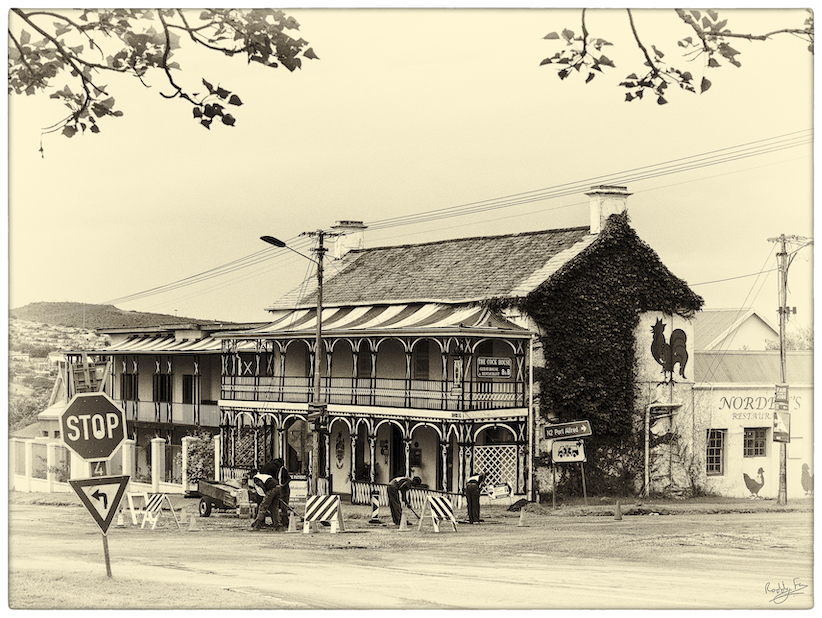
Makana Revive at work, The Cock House, Grahamstown Makhanda By Roddy Fox
Anglo-Boer War Memorial / Winged Figure of Peace statue
The Grahamstown Journal of 10 March 1906 referred to the “Memorial to the fallen men of Albany and Grahamstown”. The memorial was unveiled by the Governor, Sir Walter Hely-Hutchinson, and paid for by “money provided by free will offerings of the citizens and of the members of the various Corps, to the honour of whose dead comrades the memorial is erected.”
Rudyard Kipling composed the inscription, “To the brave men of Albany who died for the Empire during the Anglo-Boer War 1899-1902”. The sculptor was Stanley Nicholson Babb (1874-1957) of England. The bronze statue surmounting the memorial is a Winged figure of Peace bending over a dead soldier.
Roddy Fox shared this beautiful image for a Friday Photo in August 2019, see more about it here.
Methodist Commemoration Church
Makhanda (or Grahamstown) is known as the City of Saints and boasts a variety of beautiful churches. “Commem” is Neo-Gothic though classically proportioned. It was built to commemorate the Silver Jubilee of the 1820 Settlers. The foundation stone was laid on 10 April 1845 by “the Lady of the Rev William Shaw”. A leaden casket was placed beneath the stone and contained a complete set of coins and specimens of the languages English, Dutch, IsiXhosa and Sichuana’. These were the languages used by the Wesleyan Missionaries in south-east Africa. The opening ceremony was performed on 24 November 1850 by Rev William Shaw and the church was filled to capacity. Those at the celebration would be surprised to learn that generations of Kingswood boys (and now girls) have artistically carved their names into the pews in the upper galleries.
Shaw Hall
Erected in 1831 and inaugurated in 1832 as a Methodist Church. After the completion of the Commemoration Church in 1850 the Shaw Hall was used as meeting hall. The hall was named after Reverend William Shaw, the founder of the Methodist Church in South Africa. It was declared a National Monument on 27 December 1985. On 28 April 1864 Shaw Hall was used for the opening of parliament. It was the only time that the Cape Parliament ever sat outside of Cape Town.
T Birch & Co
Trenley Birch was born in England in about 1834. Shortly after his arrival in South Africa in 1860 he opened the “West Country Clothing Establishment” in Port Elizabeth which was growing significantly because of wool exports. “PE” had already eclipsed Cape Town as the busiest port in the Cape and was by now bigger than Grahamstown and Uitenhage. Trenley Birch altered and expanded his business. He opened a branch in Grahamstown in 1864 which dealt in haberdashery, drapery, civil and military tailoring and men’s wear.
Birch’s is still operating from its graceful building alongside the Commemoration Church. Aside from fashion clothing and sports equipment, Birch’s specialises in school uniforms (and associated apparel) and academic / legal gowns. Of interest and amusement to many is the still functional old pulley and cable system used to move cash takings from the sales counters to back-office.
Town Hall
The Town Hall is a fine example of Gothic Revival architecture. The building was completed in 1882 and is finished in rubble masonry with cast concrete dressings. The foundation stone was laid by Sir Bartle Frere. There is a white marble Memorial Tablet mounted on the south west pier of the clock tower. It commemorates the epic 1842 ride of Dick King, who covered the 960-km distance between Port Natal (now Durban) and Grahamstown (now Makhanda) on horseback in ten days, in order to request help for the besieged British garrison at Port Natal.
See City Hall Streetscape from Roddy Fox here.
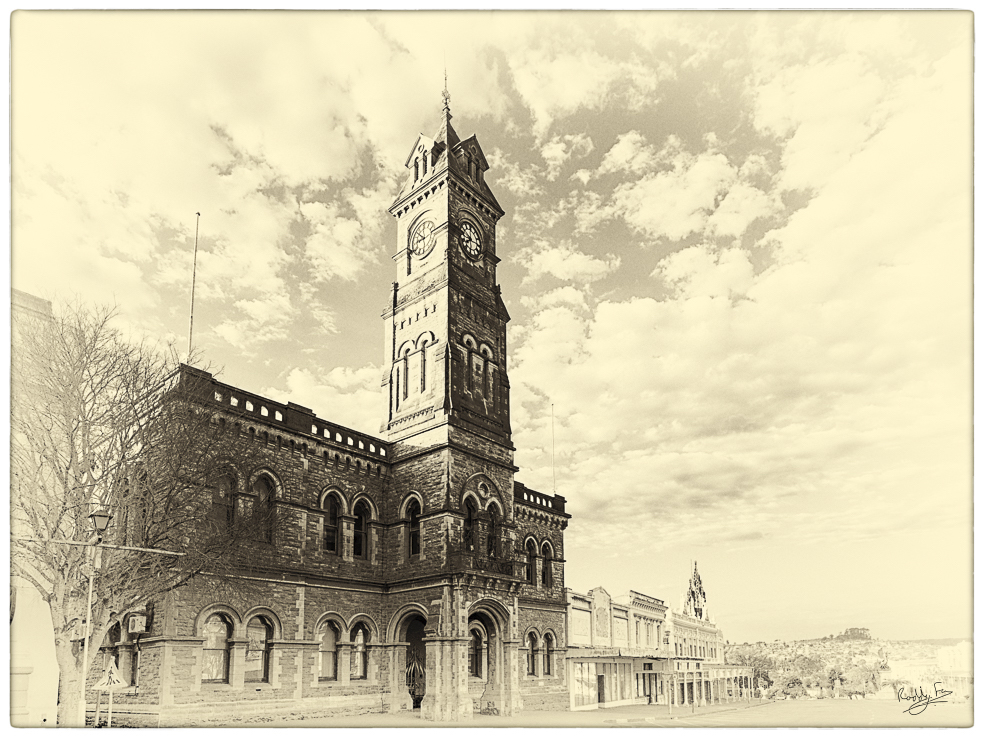
City Hall, Church Square, Grahamstown, Makana
Standard Bank Building
Standard Bank’s Grahamstown branch was an award-winning building when it was built in 1933. A quote from 1934, “A handsome edition to the civic architecture of Grahamstown is the new premises of the Grahamstown Branch of the Standard Bank of South Africa Limited, situated in Church Square, adjoining the Town Hall and Municipal Offices.”
Cathedral of St Michael and St George
The Cathedral grew out of a much simpler building over a long period of time. The surveyor who laid out the original plan for Graham’s Town in 1814, identified the site as being “a very convenient site for a church”. After the arrival of the 1820 Settlers plans were drawn by W. Jones of Cape Town for the construction of a church. Building began in 1824 and St George’s Church opened in 1830.
The establishment of the Diocese of Grahamstown coincided with the Gothic Revival which dominated church architecture for the rest of the century. Sir Gilbert Scott, succeeded by his son John, designed the new Cathedral. To ensure that the lighting in the building conformed to that in English cathedrals, the Gothic windows were made slightly narrower than normal. The spire, for many years the tallest building in the country, was completed in 1879 and, once a major dispute between the Dean and the Bishop was settled, the Cathedral was dedicated to St Michael and St George. The building was completed in its present form in 1952 and extensive repairs to the exterior were undertaken in 1986.
Explore the Cathedral with us by clicking here.
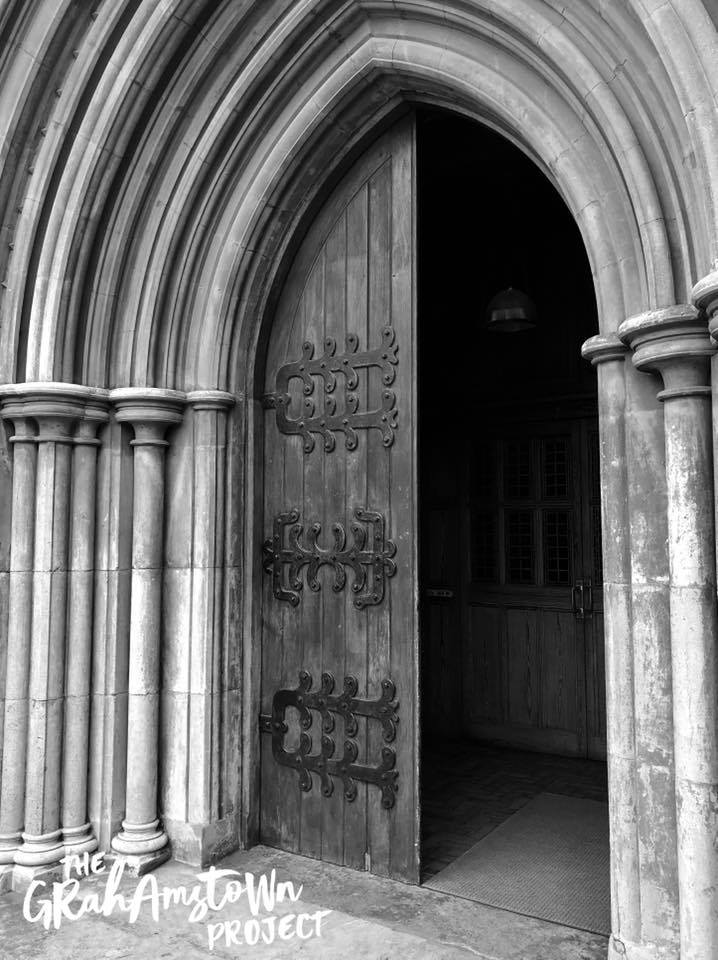
SA Library for the Blind
Located in the High Street, the library is celebrating its 100-year anniversary this year.
Rhodes University
Rhodes was founded in 1904 and today has approximately 8000 students. The university buildings are a combination of the old British Army headquarters and buildings designed by Sir Herbert Baker.
St Philips Anglican Church
The red-brick church is St Philip’s Anglican Church, built in 1860 as the Grahamstown Mission and twin of St Bartholomew’s on other side of the valley in the white / affluent side of town. St Philip’s has a stained-glass baptistry window of a Black Madonna which the church received in 1945, evidence of the emergence of black consciousness in the Anglican Church. Another notable feature is the brass plate inscribed in Xhosa to the memory of the 132 men who served in the 1914-18 war. Among them are the names of three men who died on the Mendi.
The ruins of the old school (the original Fikozolo school) are on the church grounds. In 1986 the school was burnt out in the revolt against Bantu education and apartheid. Steve Biko spent an evening at the church in 1968. At the NUSAS (National Union of SA Students) annual meeting hosted at Rhodes it was decided that, according to the law, the black delegates would not be allowed to stay on campus overnight. Biko contested the decision but received no support from the white students. He and his group walked out of the meeting and proceeded to the “township” on foot ending up at St Phillip’s Church.
St. Philip’s is a passion project of the Grahamstown Project. See the blog posts here.
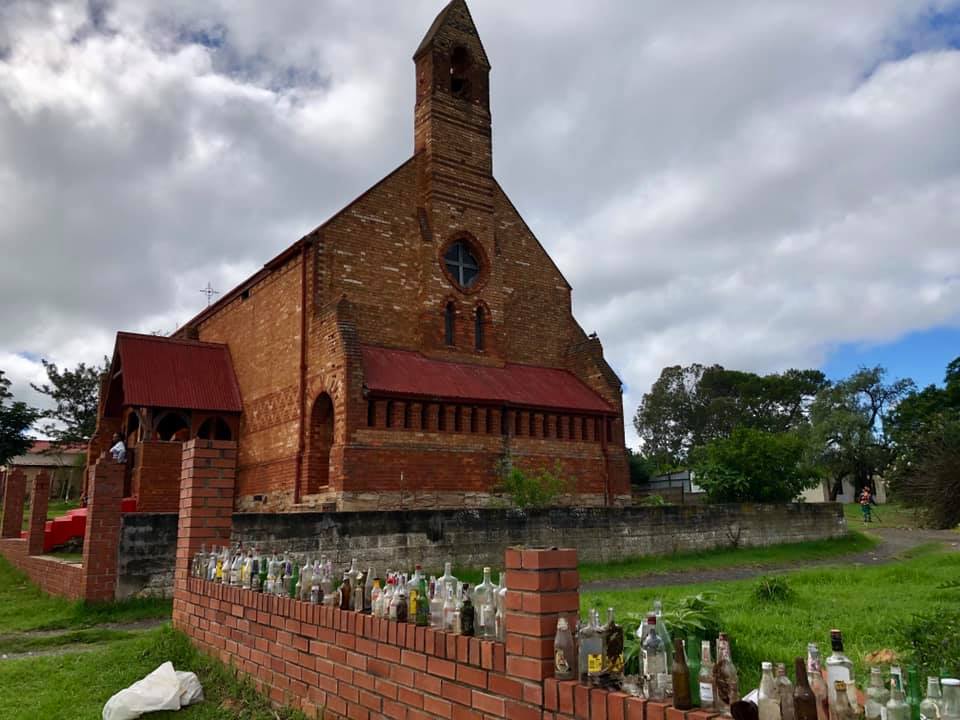
Lobengula Graves
Rhodes Njube Lobengula (ironic name) was born in 1908 and died in 1937. His grave is located in Fingo Village. He was the son of Prince Alban Njube Lobengula kaMzilikazi and Annie Mashiqa MaDlamini, an mfengu (Fingo) woman from Stutterheim. Rhodes Njube Lobengula was the grandson of King Lobengula who battled against the forces of the throne of England, led by Cecil John Rhodes in 1894. After returning to Rhodesia (Zimbabwe today) and living there for some time, the colonial government again exiled Rhodes Lobengula into exile like his father before him. Accompanied by his wife, Rosanmond, Rhodes left for South Africa (1911) eventually settling near Grahamstown. He had a miserable life in South Africa and he died in mysterious circumstances in the Fish River in 1937.
Egazini Battle Memorial Garden
A memorial garden to the Battle of Grahamstown / Egazini (1819). The 200-year anniversary of the battle was commemorated on 22 April 2019. The garden contains approximately 20 concrete plinths decorated with artworks and poetry commemorating the battle.
Fort England Psychiatric Hospital
An important landmark, specifically because it was where much of the Battle of Grahamstown took place. Chief Makhanda (the prophet chief recognised by Chief Ndhlambe) led 10,000 amaXhosa Warriors in an attack of the barracks at Fort England and a site in town thought to have been near the present (dilapidated) railway station. Fort England is visible on the other side of the valley, across the railway line and little Amatyana stream.
The Best of Makhanda
Restaurants, pubs and coffee shops
Accommodation in Makhanda
- A White House (Guest House)
- Fiddlewood Fields
- 8A St. Aiden’s Guest Lodge
- Kwame Makana Homestays
Walking, running and cycling
- The Bot Gardens
Second oldest botanical gardens in Africa. The Park Run is held in the gardens every Saturday morning at 8am.
- The Mountain Drive
Go for a brisk walk or longer hike. The scenery is spectacular. On a clear day you can see the ocean. Imagine what is must have been like for the Xhosa people in the 16th, 17th and 18th centuries to observe the strange vessels on the sea carrying white people.
- The Old Grahamstown Golf course
Also known as The Goat Track out north on the Bedford Road. There is now a fine new golf course (The Belmont) south of the city in the Belmont Valley. The old course borders the military base (6SAI) and the airfield. It is popular with dog walkers. Slightly spoiled by the deplorable state of the municipal dump on the other side of the Bedford Road, it is nevertheless a place of peace and space and history. On the eastern edge of the old course, overlooking town, is a small monument to the St Andrew’s College Cadet Corp who set up fortifications in the event of Jan Smuts and his Boer War (1899-1902) army advancing on Grahamstown.
Schools
Tours and talks
- Otto Ntshebe’s “Spirit of Life” tour of Makhanda.
- Fleur Way-Jones’ walking tour of the city centre.
- Luke Beckmann, Beckmann Tours & Safari’s.
- Alan Weyer’s fascinating historic account of the district.
- U3A talks every Thursday morning at The Grahamstown Bowls club
Reddits Poetry Evening (last Friday of the month, Café D’Vine) - Dr Marguerite Poland
Join Moegs (as she is known to her friends) for a rich tapestry of stories and history about St Andrew’s College, with a particular focus on the chapel.
Game Reserves
Hunting Safaris
What are you waiting for?


